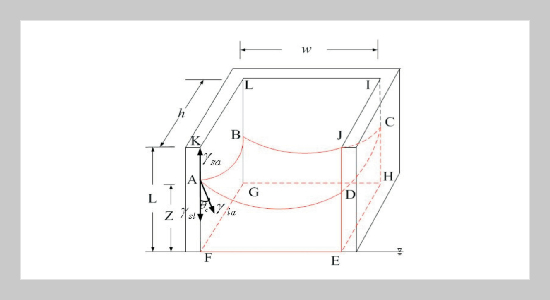REFERENCES
- [1] de Genes, P. G., “Wetting: Statics and Dynamics,” Rev. Mod. Phys., Vol. 57, pp. 827�890 (1985). doi: 10. 1103/RevModPhys.57.827
- [2] Israelachvili, J. N., Intermolecular and Surface Forces, Academic, London, p. 120 (1985).
- [3] Madou, M., Fundamentals of Microfabrication, 2nd Ed., CRC, New York, p. 584 (2002).
- [4] Sobolev, V. D., Churaev, N. V., Velarde, M. G. and Zorin, Z. M., “Surface Tension and Dynamic Contact Angle of Water in Thin Quartz Capillaries,” J. Colloid Interface Sci., Vol. 222, No. 1, pp. 51�54 (2000). doi: 10.1006/jcis.1999.6597
- [5] Yang, L. J., Yao, T. J. and Tai, Y. C., “The Marching Velocity of the Capillary Meniscus in a Microchannel,” J. Micromech. Microeng., Vol. 14, No. 2, pp. 220�225 (2004). doi: 10.1088/0960-1317/14/2/008
- [6] Chan, W. K. and Yang, C., “Surface-Tension-Driven Liquid-Liquid Displacement in a Capillary,” J. Micromech. Microeng., Vol. 15, No. 9, pp. 1722�1728 (2005). doi: 10.1088/0960-1317/15/9/014
- [7] Tas, N., Sonnenberg, T., Jansen, H., Legtenberg, R. and Elwenspoek, M., “Stiction in Surface Micromachining,” J. Micromech. Microeng., Vol. 6, No. 4, pp. 385�397 (1996). doi: 10.1088/0960-1317/6/4/005
- [8] Wang, H. J., Tsai, H. C., Chen, H. K. and Shing, T. K., “Capillary of Rectangular Micro Grooves and Their Applications to Heat Pipes,” Tamkang Journal of Science and Engineering, Vol. 8, No. 3, pp. 249�255 (2005). doi: 10.6180/jase.2005.8.3.12
- [9] Yang, L. J. and Liu, K. C., “Surface Tension-Driven Micro Valves with Large Rotating Stroke,” Tamkang Journal of Science and Engineering, Vol. 10, No. 2, pp. 141�146 (2007). doi: 10.6180/jase.2007.10.2.08
- [10] Mastrangelo, C. H. and Hsu, C. H., “Mechanical Stability and Adhesion of Microstructures under Capillary Forces- Part I: Basic Theory,” Journal of Microelectromechanical Systems, Vol. 2, No. 1, pp. 33�43 (1993). doi: 10.1109/84.232593
- [11] Mastrangelo, C. H. and Hsu, C. H., “A Simple Experimental Technique for the Measurement of the Work of Adhesion of Microstructures,” Technical Digest - IEEE Solid-State Sensor and Actuator Workshop, pp. 208�212 (1992). doi: 10.1109/SOLSEN.1992.228291
- [12] Mastrangelo, C. H. and Hsu, C. H., “Mechanical Stability and Adhesion of Microstructures under Capillary Forces- Part II: Experiments,” Journal of Microelectromechanical Systems, Vol. 2, No. 1, pp. 44�55 (1993). doi: 10.1109/84.232594
- [13] Fortes, M. A., “Axisymmetric Liquid Bridges between Parallel Plates,” J. Colloid and Interface Science, Vol. 88, No. 2, pp. 338�351 (1982). doi: 10.1016/0021- 9797(82)90263-6
- [14] Gere, J. M. and Timoshenko, S. P., Mechanics of Materials, 2nd ed., Brooks/Cole Engineering Division, Monterey, California, p. 736 (1984). doi: 10.1115/ 1.3269380
- [15] Yang, L. J., Jan, D. L. and Lin, W. C., “Steel-Based Bionic Actuators for Flapping Micro-Air-Vehicles,” Micro and Nano Letters, Vol. 8, No. 10, pp. 686�690 (2013). doi: 10.1049/mnl.2013.0316
- [16] Bico, J., Roman, B., Moulin, L. and Boudaoud, A., “Elastocapillary Coalescence in Wet Hair,” Nature, Vol. 432, p. 690 (2004). doi: 10.1038/432690a
















